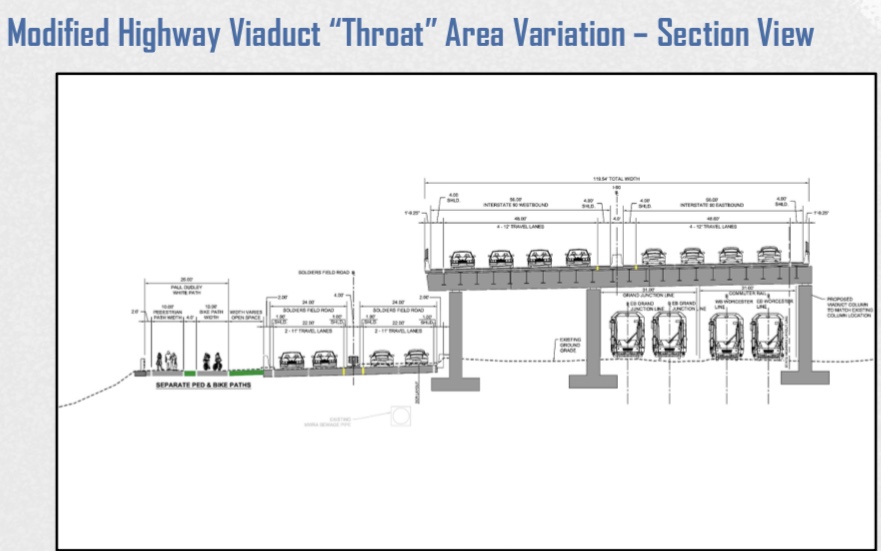stick n move
Superstar
- Joined
- Oct 14, 2009
- Messages
- 12,109
- Reaction score
- 18,956
I'm guessing that the Feds basically don't want the river filled in at all, period. Hence their opposition to the all at-grade option. I worked on another road project a few years go which attempted to fill in part of a river, and the Feds absolutely stopped it.
By the way, back in 1963 when the Pike was being designed, the original proposal was to not have a viaduct but to have all the roads on the surface thru the throat area, very much like the current option to do just that. The city of Cambridge stopped it that time, claiming it would have had a bad effect on the Cambridge side of the river.
I get that, thats why Im pointing out that the flood plain excuse is bs. If they dont want to build out over or fill in the river at all, then they should say that. Saying that the at grade option doesnt work because of the flood plain, but then every single option has either sfr or the pike at grade is ridiculous. If the preferred option was sfr and the pike both on viaducts then they have an argument about flooding, but thats not one of the options presented. Saying one thing but meaning something else isnt really a great foundation to start a multi billion dollar possible decade long infrastructure project.
Theyre in a pickle. They dont want to build out into the river to improve the area and theres no way to build everything above the flood plain either. So in the end theyll rebuild as is, part of it will be at grade regardless, and everyone loses.
Last edited:

